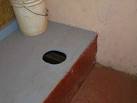oh its jam band friday ( http://www.youtube.com/watch?v=y54bFYwGr_Y )
Just for kicks and because it is Friday, I googled up Alternative Energy in Central Illinois and this is what I found:
Welcome to Central Illinois Renewable Energy Expo
The Peoria County 4-H and Extension Foundation is proud to present the Central Illinois Renewable Energy Expo, May 2nd and 3rd at the Green Sports Complex in Mossville, Illinois near Peoria. This event is designed to be educational and informative with plenty of vendor displays, seminars, kids’ activities and information on renewable energy, energy efficiency, sustainable solutions, green lifestyles, and earth-friendly technology.
The event, the first one to be offered in Central Illinois, is designed to provide an opportunity for area residents and businesses to learn more about renewable energy and energy-efficiency products and services. “Every time your turn on your radio or TV you hear something about energy consumption. Many, if not all of us, would like to know more about how to save money on heating, fuel, electricity and so on, so we thought the Expo would be a great opportunity,” said Gary Sutton, Expo Coordinator and a member of the Peoria County 4-H and Extension Foundation. “We were amazed at how many people attended in 2008—it confirmed the need for an event like this. We are very grateful for our volunteer event partners and we think the Expo will continue to be a great experience for all in central Illinois.”
:}
http://www.youtube.com/watch?v=gT1mbxOQxHY&feature=related
I mean if it has gotten to the 4-H people well then it has become a tidal wave.
http://moleprogressive.blogspot.com/2009/07/illinois-focus-blogs-food-co-ops.html
ILLINOIS FOOD CO-OPS
It took nearly 7 years living within a few blocks of one of the biggest food co-ops in America before Joy and I joined it. We were definitely reluctant. But, in the end the lack of good produce and the decline of our local supermarkets led to us joining. And the result is a slighly more inconvenient shopping trip each week, but much healthier, higher quality and cheaper food. I recommend joining a co-op if there is one nearby. You will save money and eat healthier. So I will list some local food co-ops in Illinois:
West Central Illinois Food Cooperative
P.O. Box 677
Galesburg, Illinois 61402
wcifoodcoop@wcifoodcoop.com
http://www.wcifoodcoop.com
West Central Illinois Food Cooperative is a not for profit natural foods Co-op located in Galesburg, Illinois serving people in Knox and Warren County. We are affiliated with United Natural Foods. United Natural Foods has a warehouse in Iowa City.
We are a small food coop with about 20 to 30 families at any one time. Our monthly orders average about
$2,000 – $3, 000. We have been operating as a Co-op since 1982. We do not have any one that earns a salary. All of our work is performed by members who work the different jobs as part of their monthy obligation. Working Members pay a 1% mark up from the wholesale price in the Catalog. We have nonworking members. They pay a 10% mark up. Please explore the various links on our site for additional information about the Co-op and United Natural Foods. You can also get additional information at United Natural Foods Buying Clubs site at www.unitedbuyingclubs.com
Common Ground Food Co-op
610 E. Springfield
Champaign, Illinois 61820
Phone: (217) 352-3347
FAX: (217) 352-2214
comments@commonground.coop
http://www.commonground.coop/
Common Ground Food Co-op is a cooperatively owned grocery store that promotes local and organic production, fosters conscious consumerism, and builds community.
Though we are community-owned, membership is not required to shop in the store!
Common Ground Food Co-op carries a wide variety of groceries, produce, and health and beauty products.
:}
http://www.youtube.com/watch?v=9SKFwtgUJHs&feature=related
http://www.windaction.org/news/16700
Finally from one of the best writers in Central Illinois, Tim Landis:
Wind farms sprouting up on central Illinois landscape
Three more wind farms – each a utility-scale project with the potential for 100 to 150 towers – are in the works for central Illinois. Trade Wind Energy, a Kansas-based alternative energy developer, confirmed the company has signed leases with landowners for two wind farms in DeWitt County and is in discussions for a third in Christian County. The first two sites are east and west of Clinton, about 45 miles northeast of Springfield, and the third is north of Pana, 45 miles southeast of Springfield. …Trade Wind Energy has held meetings with Farm Bureau and elected officials in both counties, and Enger said company executives understand it is important to be “open and transparent” about development plans.
July 7, 2008 by Tim Landis in Southtown Star
Three more wind farms – each a utility-scale project with the potential for 100 to 150 towers – are in the works for central Illinois.
Trade Wind Energy, a Kansas-based alternative energy developer, confirmed the company has signed leases with landowners for two wind farms in DeWitt County and is in discussions for a third in Christian County.
The first two sites are east and west of Clinton, about 45 miles northeast of Springfield, and the third is north of Pana, 45 miles southeast of Springfield.
“We are substantially into the leasing process. We already have enough land there for a wind farm,” Trade Wind Energy development manager Duane Enger said of the negotiations in DeWitt County.
Enger said lease negotiations have only just begun for the site north of Pana, and that it is too soon to discuss a construction schedule for any of the projects. But he said all eventually would produce 100 to 150 megawatts of electricity.
A megawatt typically would supply 250 to 300 homes, according to industry standards.
Enger said, in addition to open expanses of farmland, three major transmission lines that run through the counties, including to the Clinton nuclear reactor, would make it easier to get power to the grid.
The Trade Wind Energy projects come a little more than two months after Virginia-based Dominion Corp. announced plans for a 25,000-acre wind farm and 150 to 200 wind turbines in southern Christian and northern Macoupin counties.
Dominion also is negotiating for land leases estimated by the company at $3,000 to $4,000 per year, per turbine.
Christian County Farm Bureau manager Eric Johnson said the wind developers have been generally well received.
“As long as the wind company offers good compensation and a good contract — most farmers are pretty open minded about it,” Johnson said.
Brian Fesser is among Christian County farmers approached by Dominion, but he said he has not decided whether to allow wind turbines on a 1,200-acre grain farm south of Taylorville that has been in his family for more than 50 years.
Money, he added, is not the only factor.
“It’s having to farm around the wind towers themselves. It’s just like mowing your lawn, the more trees you have, the more time it takes,” he said.
Trade Wind Energy has held meetings with Farm Bureau and elected officials in both counties, and Enger said company executives understand it is important to be “open and transparent” about development plans.
He said the company plans to open offices in the area as soon as possible.
Enger said improvements in wind-turbine technology have made it possible to operate at lower wind speeds – Trade Wind looks for areas with consistent 10 to 18 mph winds – but that rising energy prices also are a factor.
“There has just been more demand for energy the last few years,” he said.
Trade Wind Energy
- Founded: 2001
- Corporate headquarters: Lenexa, Kan., suburb of Kansas City
- Largest investor: Enel North America Inc., a subsidiary of Enel SpA, one of the world’s largest publicly held utility companies
- Current projects: Kansas, Missouri and Illinois
- On the Web:www.tradewindenergy.com
Web link: http://www.southtownstar.com/business/1040540,0707…
:}
Things are starting to change aren’t they?
http://www.youtube.com/watch?v=x1-Sv-HMHqE&feature=related
:}

 The creation and implementation of the Department of Homeland Security has intensified the quest to make the nation’s food supply more secure.
The creation and implementation of the Department of Homeland Security has intensified the quest to make the nation’s food supply more secure. 
 :}
:}










